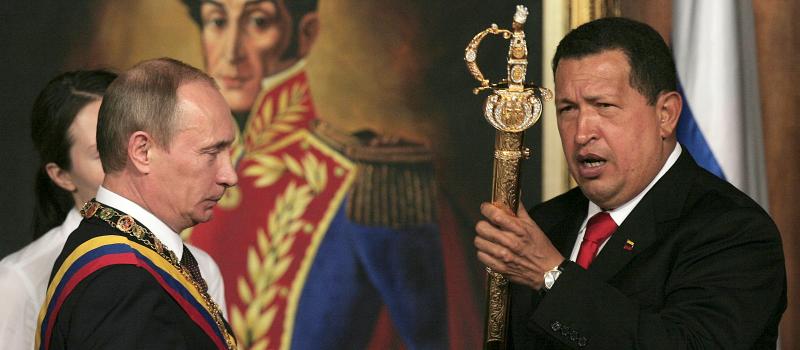Russia’s Latest Return to Latin America
posted by R. Evan Ellis on January 19, 2022 - 12:00am

This report originally appeared in the Global Americans.
The indirect threat made by Russian Deputy Foreign Minister Sergei Ryabkov as the crisis in the Ukraine escalated in January 2022, that Russia could not rule out deploying military forces to Venezuela and Cuba, highlighted the strategic risks posed by Russia’s position in the Western Hemisphere.
On its face, the credibility of Russia deploying militarily meaningful capabilities in those two countries is dubious, as U.S. National Security Advisor Jake Sullivan noted; in the context of Russia’s large-scale troop mobilization on its border with the Ukraine and elsewhere, its military and budgetary ability to simultaneously sustain a meaningful military presence in the Western Hemisphere is questionable, and would likely be counterproductive to its military, economic, and diplomatic ability to achieve the goals of a military operation in Europe. Russia’s present gesture is not, however, the first time in the post-Cold War era that it has sought to use military threats in Latin America when challenged in its near abroad. In 2008, during the conflict over Russia-backed separatists in Georgia, Russia first deployed Tu-160 nuclear-capable bombers to Venezuela, later followed by four warships. Russia sent its Tu-160 bombers back to the region again in 2013 as the United States and European Union pressured the country over its support of separatist forces in Ukraine, and for a third time in 2018. Indeed, during the latter deployment, the Russian government declared its intention to set up an airbase on Venezuela’s tiny La Orchilla Island.
Even if Russia’s most recent threatened military deployment is not credible, the country remains a nuclear armed power with the ability to pose a real, if limited, strategic threat to the United States by operating in this hemisphere. In recent years, Russia has left a strategic impact on Latin America and the Caribbean far beyond its limited resources and conventional military power projection capabilities. It has done so through a combination of selective threats, military and commercial activities, and information warfare operations, all mostly leveraging a coalition of willing anti-U.S. regimes in the region.
For the past six years, the relative weakness of Latin America’s left, coupled with low oil prices that have limited the ability of Russia to project sustained power into the Western Hemisphere, has concealed the challenge of Russian engagement. Those limiting factors, however, are eroding. The present article examines the challenge to the United States and the region presented by Russian activities in Latin America, particularly in the context of the complementary effect of other extra-hemispheric actors such as China and Iran, as well as the region’s unprecedented turn to the left and populist authoritarianism.
Please click here to continue to read this report.

